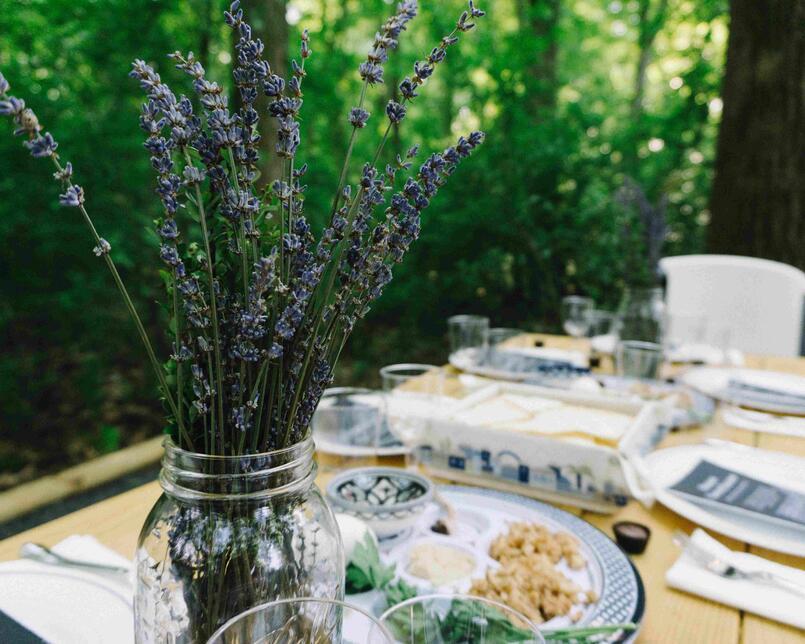Recent data show that 3 out of 4 European Jews attend a Passover seder, making it the single most common Jewish experience of the year. What your children think of it might influence what they think about Judaism as a whole.
Dr Jonathan Boyd
Dr Jonathan Boyd
If you are anything like me, you probably spend a fair chunk of your time thinking about how best to cultivate in your children or grandchildren the same kinds of passions and commitments to Judaism that you have. Should I send them to a Jewish school? Do they have to stay home with the family on Friday night? It’s not always obvious what is the right thing to do, and more often than not, most of us are playing a guessing game.
But if I were a betting man, I’d put most of my chips on Seder night. I don’t think any other experience in the Jewish year matters quite as much. Empirically, it seems to be the big one; the occasion when all the sociological stars seem to align; the Jewish year’s, ahem, ‘crunch’ moment.
Why? First, unlike most other Jewish experiences, rather a lot of us tend to show up. Figures from Israel indicate that 93% of Jews there attend a seder each year. The latest counts for American Jews are considerably lower – 62% – but that still makes the seder the single most common American Jewish experience of the year. Data from our new study, The Jewish identities of European Jews (2022), indicate that 74% of European Jews typically attend a Passover seder, although it varies quite substantially by country. In the UK, 77% of Jews attend a seder dinner: more than those who choose to fast on Yom Kippur (66%), light candles on Friday night (54%) or eat kosher meat at home (45%). In simple terms, more or less wherever we look, more Jews across the world will be attending s’darim this year than pretty well anything else we might do together.
The Passover seder is the single most common Jewish experience of the year. In the UK, 77% of Jews attend a seder dinner: more than those who choose to fast on Yom Kippur (66%), light candles on Friday night (54%) or eat kosher meat at home (45%)
Second, sharing Jewish festivals with our families is important to many of us – indeed, over half of all Jews in Europe say that it is ‘very important.’ That doesn’t necessarily mean we always enjoy doing so, but we value it. Indeed, when we ask Jews what matters to them about their Jewishness, this familial element always comes close to the top of the list. ‘Feeling part of the Jewish people’ occupies a similar place, and arguably, there is no greater opportunity to feel that connection than at a time when so many Jews all over the world are essentially doing the same thing.
Third, evidence suggests that what we do Jewishly in our homes – more than in synagogues, schools, youth movements and pretty well anywhere else – has the greatest statistical impact on who we ultimately become as Jews. The home environment is most formative; if we get that right, we maximise our chances of success.
And fourth, at the core of the seder experience is the multi-sensory telling of the foundational narrative of the Jewish People. By narrative, I mean ‘big’ story – the kind of profound story that sociologists and educators say shapes our understanding of who we are and how we ought to behave. The Passover story plays that role in Judaism. It’s not just a biblical tale; by reminding us of our origins, our slavery and our redemption, it gives us our moral compass.

In essence then, on seder night, in Jewish homes all over the world, numerous Jews gather with their families to celebrate a major Jewish holiday, while discussing our shared narrative through food and song – the perfect recipe for creating Jewish memories and leaving lasting Jewish impressions. Indeed, because of this, irrespective of what we actually do on seder night, we can be reasonably confident it will have an impact on those present. And critically, because it is such a fundamental Jewish experience, that impact can be positive or negative.
So I would pay very close attention to the adjectives people use to describe their seder experience. If the seder is tedious, they are learning that Judaism is tedious. If the seder is warm and inviting, they are learning that Judaism is warm and inviting. If the seder is contentless, they are learning that Judaism is contentless. If seder is rich in meaning, they are learning that Judaism is rich in meaning. In short, the seder is Judaism in microcosm, and whatever values, ideas and feelings we convey during it will be experienced by others as everything that is good – or bad – about what Judaism has to offer.
So here’s a thought. Ask yourself what three adjectives you would ideally want your children or grandchildren to use when describing their Judaism. Then apply those adjectives to your seder – make it everything you wish their Judaism to be. This, after all, is the big annual opportunity. And have no doubt: it will leave its mark, of whatever kind, whether we like it or not.
Executive Director
Executive Director
Jonathan has been Executive Director of JPR since 2010, having previously held research and policy positions at the JDC International Centre for Community Development in...
Read more